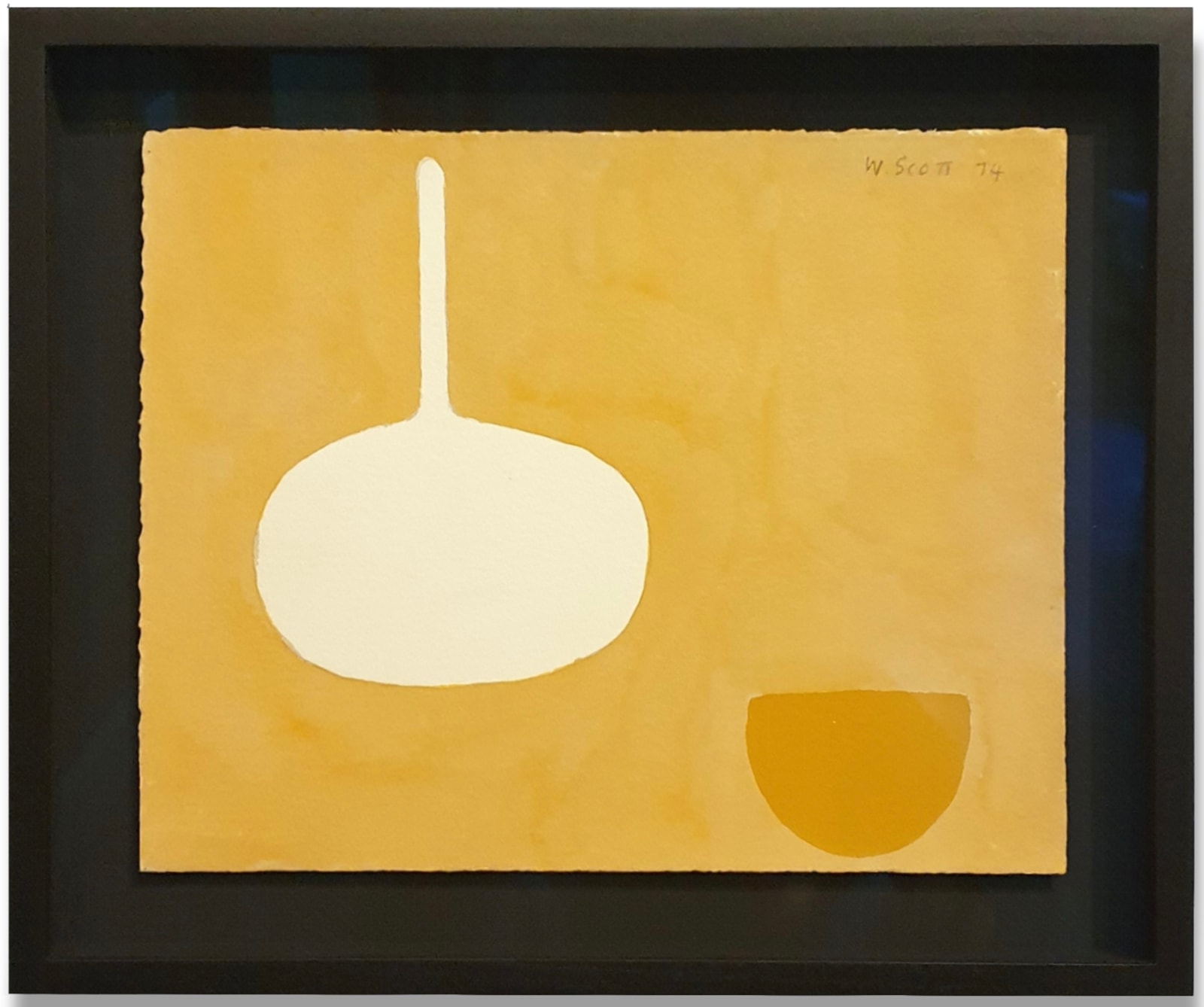William Scott U.K., 1913-1989
Still Life Orange Theme XVIIIL, 1974
Pencil and gouache on paper
Signed by the artist and dated in pencil, upper right on recto
Signed by the artist and dated in pencil, upper right on recto
21 × 26 cm (framed: 38 x 42 cm)
© The Estate of William Scott
Weitere Abbildungen
William Scott's painting 'Still Life Orange Theme XVIIIL' is a small yet significant work that exemplifies the artist's mature style and his ongoing exploration of still life as a subject....
William Scott's painting "Still Life Orange Theme XVIIIL" is a small yet significant work that exemplifies the artist's mature style and his ongoing exploration of still life as a subject. Created in 1974, the painting represents Scott's continued exploration of still life as a central theme in his work. The artist’s approach to still life was influenced by European modernism, particularly the work of Georges Braque and the Cubist movement. However, he developed a distinctive style that bridged the gap between representational and abstract art, focusing on the essential qualities of the objects he depicted.
Throughout his career, Scott used everyday objects like cups, pans, and bowls as vehicles to explore his interests in space, form, and colour. The painting demonstrates Scott's ability to elevate everyday objects to the status of artistic subjects, inviting viewers to appreciate their inherent beauty and the artist's mastery of form and colour. It also serves as a testament to Scott's enduring legacy as one of the most celebrated Ulster painters of the 20th century.
As a mature work from the 1970s, this painting is the culmination of Scott's artistic journey and his unwavering commitment to the still life genre, showcasing his distinctive voice and his significant role in shaping the course of modern British art and influencing generations of artists who followed.
Throughout his career, Scott used everyday objects like cups, pans, and bowls as vehicles to explore his interests in space, form, and colour. The painting demonstrates Scott's ability to elevate everyday objects to the status of artistic subjects, inviting viewers to appreciate their inherent beauty and the artist's mastery of form and colour. It also serves as a testament to Scott's enduring legacy as one of the most celebrated Ulster painters of the 20th century.
As a mature work from the 1970s, this painting is the culmination of Scott's artistic journey and his unwavering commitment to the still life genre, showcasing his distinctive voice and his significant role in shaping the course of modern British art and influencing generations of artists who followed.



